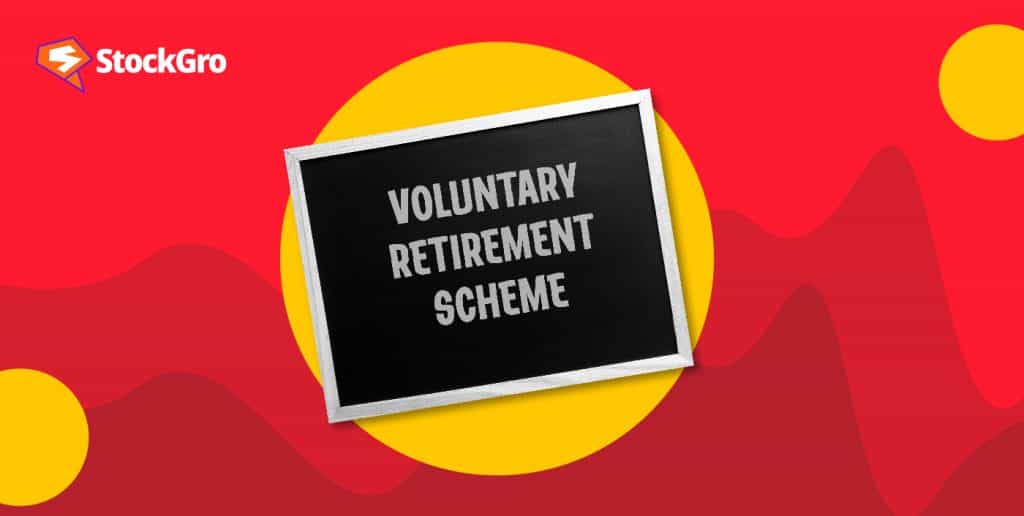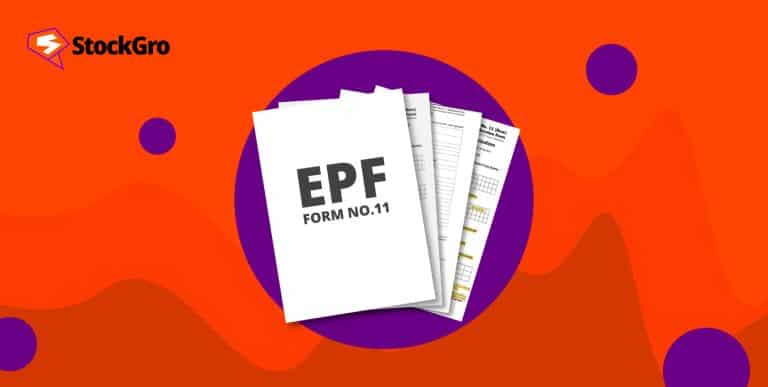
Is the retirement age really 60? What if you want to step away from work early?
For many, the traditional age to stop working feels too distant. Maybe you have health issues. Or maybe you just want a change. The option to leave the workforce early can be appealing. This is where the VRS, full form Voluntary Retirement Scheme, comes into play.
It’s a win-win situation. Employers can reduce their workforce. At the same time, employees can exit their jobs before the standard age.
This blog aims to explain everything you need to know about this scheme.
What is a voluntary retirement scheme?
VRS is a programme that allows employees to end their service before the usual retirement age. The purpose was to assist businesses in downsizing their surplus employment without creating complications.
The notion was established to address the issues posed by the Industrial Disputes Act of 1947. The regulation does not permit immediate termination. This made it hard for businesses to cut down on staff. VRS was the solution. It lets employees leave their jobs early with a financial package.
For example, all permanent workers at Britannia’s Taratala factory in Kolkata recently accepted the VRS. This ensured that business operations continued smoothly without any impact.
VRS can be implemented by both public and private sector companies. Say if the business is in recession, a change in organisation structure like joint ventures or mergers and sometimes a dated product/technology can lead the company to reduce manpower.
Hence it is often called the “Golden Handshake” because It helps companies manage excess staff while offering employees an attractive early exit option.
Also read: Step-by-step guide on retirement planning for baby boomers
Key features of VRS
- When choosing VRS, companies settle all PF or the Provident Fund and gratuity dues. This provides immediate financial security to the exiting personnels.
- Compensation paid under VRS is income tax-free up to ₹5 lakhs, as per Section 10 (10C) of the Income Tax Act. Remember, you must claim this benefit in the same assessment year.
- For additional support, the entity can sometimes arrange for tax consultation, counselling, and rehabilitation services to help the new retirees transition smoothly.
- If you’re opting for early retirement, then you cannot join another organisation in the same industry or management. This clause prevents conflicts of interest.
- Similarly according to VRS rules, organisations cannot refill positions vacated by VRS. This helps in achieving the intended reduction in the workforce.
These are the general features of the scheme. It acts as an advantage of the voluntary retirement scheme.
Also read: Importance of Pension Plans
Eligibility for VRS application
Employees must have at least 10 years of service to qualify for the early exit. This requirement targets those who have made significant contributions over a long period.
Additionally, the employee must be at least 40 years old. The age threshold helps ensure that the system is aimed at ageing employees who are closer to their retirement years.
It’s important to note that all employees, except directors, can avail themselves of the VRS. This broad eligibility makes the scheme accessible to a wide range of employees within the company.
Government servants are required to have served for 20 years. It is also required to give a written notice of at least three months.
VRS calculation
The compensation involves two distinct methods. The first method grants a 45 days salary for every completed year of service. This approach rewards long-term service with a substantial payout.
In the second method, the last drawn salary is multiplied by the months remaining until retirement. This computation represents prospective income in the future.
The final payout will be the lower value derived from these two methods. This ensures the compensation is fair and balanced, taking into account both past service and future potential earnings.
In public companies, the compensation cannot exceed 60 days’ salary for each completed year of service or the salary for the remaining months of service, whichever is less. Only basic pay and Dearness Allowance (DA) are included in this calculation, excluding other elements.
For the public with different financial standings, there are specific patterns like the Gujarat and DHI or Department of Heavy Industry patterns. Under the Gujarat pattern, employees receive 35 days’ salary for each completed year of service and 25 days for the remaining service period. The DHI pattern offers 45 days’ emoluments for each completed year or the remaining months’ salary, with special provisions for those with over 30 years of service
You may also like: Tax-efficient withdrawal strategies for retirement in India
Bottomline
The voluntary retirement serves as a strategic advantage for both the organisation and its staff. Employees gain an early exit with financial benefits, including tax-free compensation and immediate settlement of dues. This programme serves individuals who wish to retire early for private or health-related reasons.
For employers, VRS facilitates efficient downsizing, reducing workforce without legal hurdles. It aids in cost management and operational restructuring. By clearly understanding VRS eligibility and calculation methods, employees can make well-informed decisions about early retirement, while employers can manage excess staff effectively, ensuring a smooth transition for all parties involved.
Want to test your trading skills without risk? Use StockGro’s virtual trading platform and refine your strategies. Start with virtual trading app now!FAQs
- What is the rule of VRS?
The rule of VRS is simple. Employees need at least 10 years of service or be over 40 years old. Directors are excluded. Public sector employees must have 20 years of service. A written notice of three months is required. The compensation is calculated using specific methods. It’s designed to offer financial security while helping companies downsize. The focus is on fairness and balance.
- What are the benefits of the VRS scheme?
The VRS scheme offers several benefits. Employees get a financial package for early retirement. It provides immediate security by settling PF and gratuity dues. Compensation up to ₹5 lakhs is tax-free. Some companies also offer tax consultation and counselling. This helps employees transition smoothly. Employers benefit by reducing excess staff efficiently. It allows for easier restructuring. Both parties find it advantageous.
- How is pension calculated for voluntary retirement?
Pension for voluntary retirement is based on your last drawn salary. It considers the number of years you’ve worked. Typically, it’s a percentage of your basic pay and DA. Your total service period is crucial. The calculation aims to ensure financial stability. It rewards long-term commitment. Each scheme might have slight variations. Always check specifics with your employer.
- What is the limit of a voluntary retirement scheme?
The limit of a VRS varies. Generally, the compensation is capped. You can get up to 45 days’ salary for each year of service. Or, it might be based on your remaining months until retirement. Only basic pay and DA are counted. There’s a tax-free limit of ₹5 lakhs. Specific rules depend on the organisation. Always review the details before deciding.
- Is VRS a good option?
VRS can be a practical option for early retirement. It provides financial benefits and helps settle dues. This scheme suits those needing a change or facing health issues. However, it’s important to assess your financial situation and future plans. Consider job prospects and personal circumstances before deciding. It’s a significant choice that varies based on individual needs.
